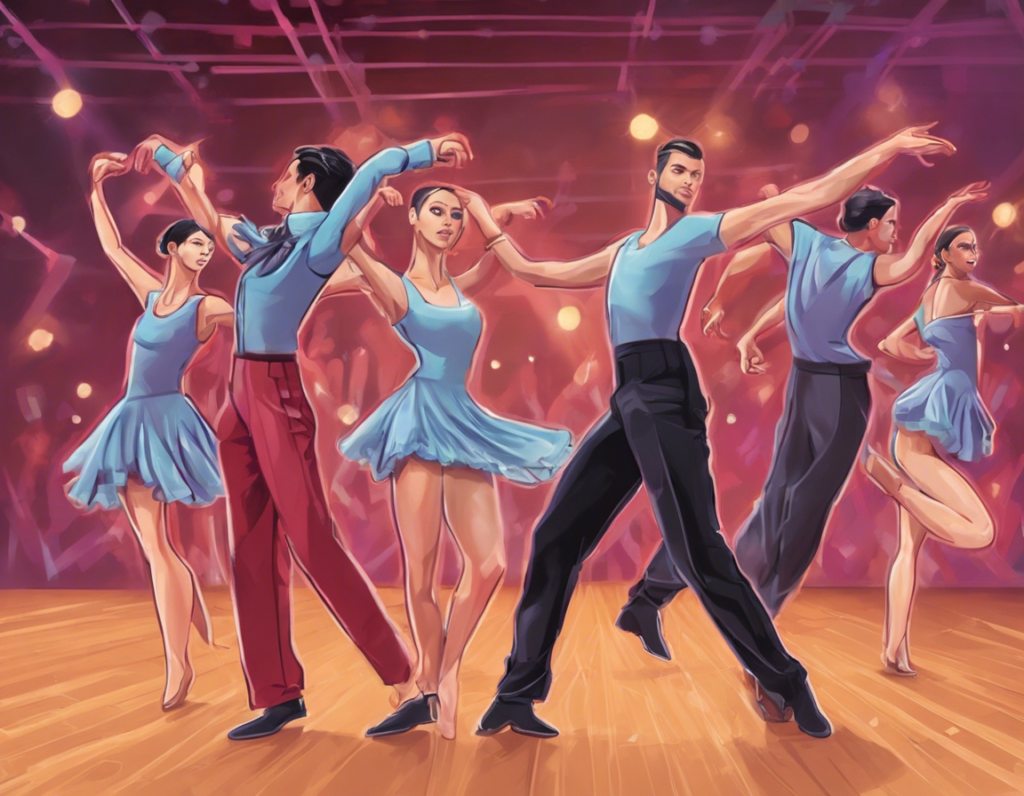Dance competitions have become increasingly popular in recent years, with dancers showcasing their skills, creativity, and passion on stage. Whether you are a beginner looking to dip your toes into the world of competitive dancing or a seasoned competitor looking to expand your repertoire, there are a variety of popular dance styles to choose from. In this comprehensive guide, we will explore some of the most popular dance styles for competition, highlighting their unique characteristics, origins, and key techniques.
1. Ballet
Ballet is a timeless and classical dance form that serves as the foundation for many other dance styles. With its graceful movements, precise footwork, and emphasis on technique and form, ballet is a challenging yet rewarding style to master. Dancers often begin training in ballet at a young age to develop strength, flexibility, and coordination.
Key Techniques: Turnout, pliés, tendus, arabesques, pirouettes, grand jetés.
2. Jazz
Jazz dance is a high-energy and dynamic style that incorporates elements of ballet, modern dance, and hip-hop. Known for its sharp movements, intricate footwork, and expressive storytelling, jazz dance is popular in both commercial and competition settings. Dancers often perform to upbeat music and focus on syncopated rhythms and musicality.
Key Techniques: Isolations, kicks, turns, leaps, syncopation, contractions.
3. Contemporary
Contemporary dance is a modern and expressive style that blends elements of ballet, jazz, and modern dance. Characterized by fluidity, emotion, and improvisation, contemporary dance allows dancers to explore their creativity and push boundaries. Routines often feature unique choreography, partnering work, and innovative staging.
Key Techniques: Release technique, floorwork, improvisation, partnering, emotional connection.
4. Hip-Hop
Hip-hop dance originated from the streets and clubs of New York City and has since evolved into a popular and influential dance style worldwide. Known for its urban aesthetic, intricate footwork, and rhythmic movements, hip-hop dance is a high-energy and dynamic style that incorporates elements of popping, locking, and breaking.
Key Techniques: Popping, locking, breaking, isolations, grooves, freestyle.
5. Tap
Tap dance is a percussive and rhythmic style that focuses on creating music through the feet. With its intricate footwork, syncopated rhythms, and use of metal-tipped shoes, tap dance is a unique and vibrant style that appeals to both dancers and audiences. Dancers often create complex rhythms and patterns using their feet as instruments.
Key Techniques: Shuffles, time steps, wings, flap heels, pullbacks, improvisation.
6. Latin
Latin dance encompasses a variety of styles, including salsa, cha-cha, rumba, samba, and mambo, each with its own unique rhythm and character. Known for its passionate and sensual movements, Latin dance is a popular choice for competition due to its infectious energy and dynamic choreography. Dancers often focus on hip action, partnering work, and musical interpretation.
Key Techniques: Cuban motion, hip action, cross-body leads, syncopated steps, rumba box.
7. Ballroom
Ballroom dance includes a variety of partner dances, such as waltz, foxtrot, tango, quickstep, and Viennese waltz. With its elegant and sophisticated movements, ballroom dance requires precision, timing, and connection between partners. Dancers often compete in both Standard (smooth) and Latin (rhythm) styles, showcasing their technical skill and performance quality.
Key Techniques: Frame, posture, footwork, rise and fall, sway, contra body movement.
8. Contemporary Ballet
Combining the classical technique of ballet with the expressive flair of contemporary dance, contemporary ballet is a versatile and dynamic style that allows dancers to blend tradition with innovation. With its fusion of fluidity, emotion, and athleticism, contemporary ballet challenges dancers to explore new movement possibilities and artistic interpretations.
Key Techniques: Ballet technique, floorwork, partnering, extensions, contractions, artistry.
9. Acro
Acro dance combines classical dance technique with acrobatic elements, such as handstands, cartwheels, and tumbling passes. Known for its athleticism, strength, and flexibility, acro dance requires dancers to balance grace with power. Routines often incorporate tricks, lifts, and contortionist movements to create visually stunning performances.
Key Techniques: Backbends, walkovers, aerials, chest stands, partner lifts, flexibility.
10. Musical Theatre
Musical theatre dance combines elements of acting, singing, and dancing to tell a story or convey a character. With its emphasis on performance quality, storytelling, and theatricality, musical theatre dance allows dancers to showcase their versatility and expressiveness on stage. Routines often include acting scenes, vocal segments, and choreographed dance numbers.
Key Techniques: Characterization, storytelling, lip-syncing, jazz hands, stage presence, vocals.
Frequently Asked Questions (FAQs)
1. Which dance style is best for beginners in competition?
For beginners, jazz or contemporary dance are popular choices as they provide a versatile and creative outlet for dancers of all levels.
2. How can I improve my flexibility for dance competitions?
Stretching exercises, yoga, and regular practice can help improve flexibility for dance competitions. It is important to listen to your body and avoid pushing beyond your limits to prevent injury.
3. What should I wear for a dance competition?
Dancers typically wear form-fitting dancewear, such as leotards, tights, and jazz pants, for competitions. Be sure to follow the specific dress code and guidelines provided by the competition organizers.
4. How can I choose the right music for my competition routine?
Select music that complements your choreography, showcases your strengths as a dancer, and engages the audience. Consider the tempo, mood, and theme of your routine when choosing music.
5. What are judges looking for in a competition routine?
Judges evaluate dancers based on technique, performance quality, musicality, creativity, and stage presence. Be sure to showcase your skills and artistry while connecting with the audience.
In conclusion, dance competitions offer dancers an opportunity to showcase their talent, passion, and dedication on stage. Whether you prefer the classical elegance of ballet, the dynamic energy of hip-hop, or the expressive storytelling of contemporary dance, there is a dance style for every performer. By exploring different styles, honing your technique, and pushing your creative boundaries, you can elevate your performance and stand out in the competitive dance world. Keep dancing, pushing yourself, and embracing the joy of movement as you embark on your competition journey.
